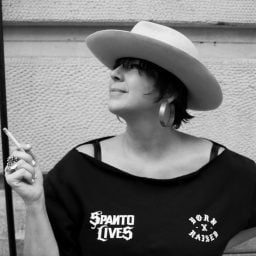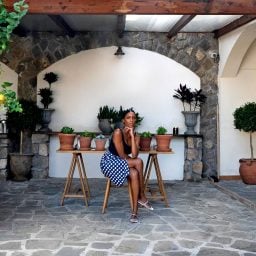“I told the President of the French Republic [Emmanuel Macron] that the Grand Palais isn’t a museum, it’s a party palace,” recounted Didier Fusillier, the new president of La Réunion des musées nationaux-Grand Palais (Rmn-GP)—a cultural establishment regrouping 18 national museums throughout France as well as the Grand Palais.
“At the beginning, with the World Fair of 1900, the Grand Palais was imagined as a place where there could be balls, not a museum, strictly speaking. More recently, there’s been Prince and Radio FG,” Fusillier said, referring to Prince performing two concerts in the nave in 2009 and Radio FG transforming it into a nightclub in 2013.
Since taking on his role on September 1, Fusillier has been eager to revive this “rather magnificent memory” of the Grand Palais’s history when the elegant building reopens in 2024 following four years of renovations. Next year, it will host fencing and Taekwondo during the Olympic Games as well as the art fair Paris+ par Art Basel, among many other events.
This vision to reach out to the public aligns with Fusillier’s broad, multi-disciplinary background. Born in 1959, he began his career launching avant-garde festivals brimming with concerts, circus, and street theatre in Maubeuge, northern France, before directing theaters and spearheading Lille European capital of culture in 2004 and Lille3000, a cultural association that organizes a triennale, exhibitions, and events. From 2015, Fusillier was president of the sprawling Bernard Tschumi-designed Park and Grande Halle de La Villette in northeastern Paris. In 2019, he served as artistic director of Nuit Blanche—an all-night extravaganza of art installations in the French capital for which he invited Daniel Buren, Annette Messager, and Sylvie Fleury, among other artists.
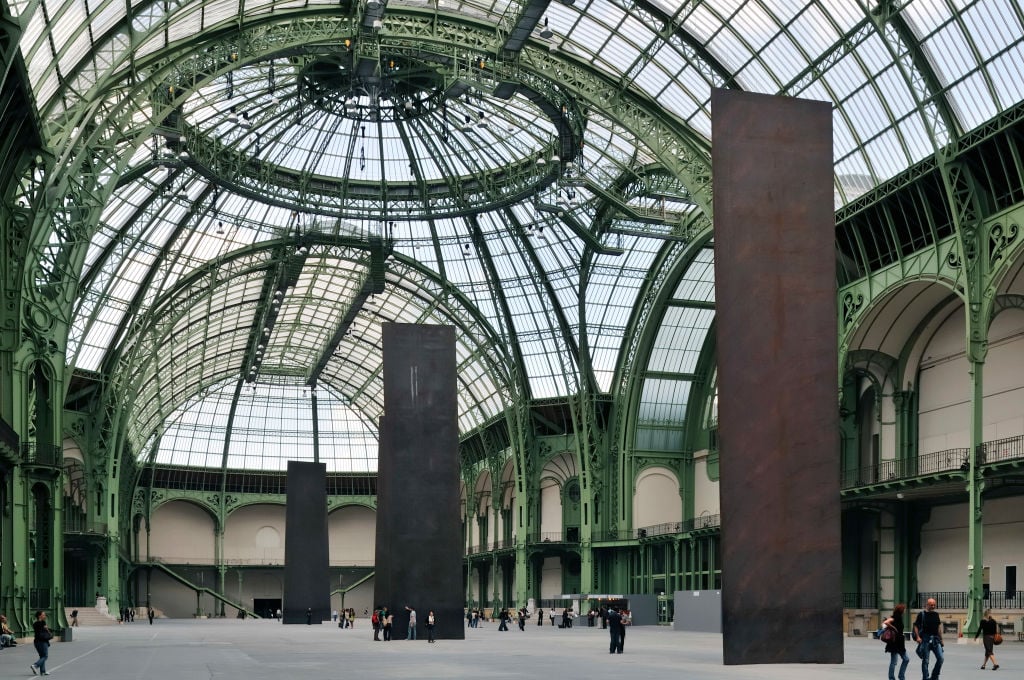
“Monumenta 2008: Richard Serra Promenade” at the Galeries Nationales du Grand Palais, Paris. Photo by Viennaslide/Construction Photography/Avalon/Getty Images.
Changing of the Guard
Fusillier had two contractual years left at La Villette, a public establishment, when he was offered the prestigious position at the Grand Palais. Fusillier started his new job, with a five-year mandate, eight-and-a-half months after Belgian museum veteran Chris Dercon quit in order to become managing director of the Fondation Cartier, a private museum founded by the eponymous luxury label. After Dercon’s shock resignation, the post remained vacant before Fusillier was invited to propose ideas in May. “They had to find someone quickly to oversee the renovations of the Grand Palais, which has to reopen in time for the Olympic Games [in summer 2024],” said Fusillier.
We are sitting in Fusillier’s office near Bastille, which he has occupied since taking over his role on September 1. On the walls are Ange Leccia’s photograph of the sea and a farewell gift from La Villette: a dancer performing in a Merce Cunningham-choreographed ballet above Tschumi’s architectural competition drawing. There is also a drawing of the Grand Palais, the historic museum complex he’s been charged to oversee.
Rather than occupying Dercon’s former office, which offers a splendid view of the Seine and is preceded by an antechamber with an assistant, Fusillier has chosen a modest room overlooking white residential and office buildings.
“It’s the same size as the other one but it has a door; I could get out by the window but it’s more dangerous,” he explained, laughing. “The view is more beautiful on the other side but I like the urban rawness here. It’s funny because I can see normal people’s bedrooms with unmade beds although I’m not like the character in Hitchcock’s ‘Rear Window’, spending my time [watching the neighbors].”
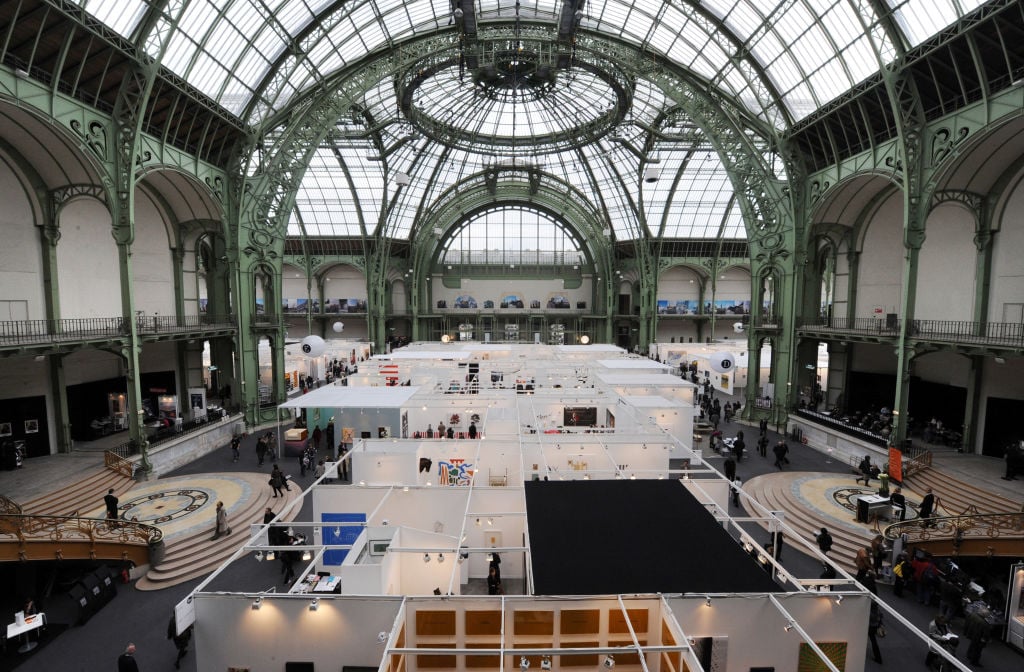
The Grand Palais in Paris, during the FIAC contemporary art fair, one day after its opening. Photo by Lionel Bonaventure/AFP/Getty Images.
Programming of the Grand Palais is up in the air while the venue is being revamped. Will Fusillier retain the inaugural exhibition, “Paris-Dakar 1966”, which Dercon scheduled for April 2024? “We don’t know yet because we might still have renovations underway,” replied Fusillier, adding that requests for loans of artworks have not been made for the show that Dercon talked about in 2021.
What is certain is that Fusillier will be working closely with Laurent Le Bon, president of the Centre Pompidou, who will be organizing exhibitions at the Grand Palais while the Pompidou is closed for its own face-lift between 2025 and 2030. “We’ll revive monographic exhibitions that created the glory of the Grand Palais, but Laurent Le Bon will unveil more in the coming weeks,” Fusillier said.
Asked if he minds Le Bon’s involvement, Fusillier answered sanguinely: “Out of 70,000 meters squared (753,480 square feet) at the Grand Palais, the national galleries are 3,000 meters squared (32,292 square feet), so there are 67,000 meters squared (720,588 square feet) for other projects,” he said.
“The public doesn’t care if an exhibition is organized by this or that museum. But I don’t see things like that. I don’t own my projects. I’m more so somebody who brings things together. Our role is to bring the most beautiful projects to the Grand Palais.” As the Grand Palais does not own a collection of artworks, it is reliant on partnering with museums like the Centre Pompidou or the Musée d’Orsay, Fusillier pointed out.
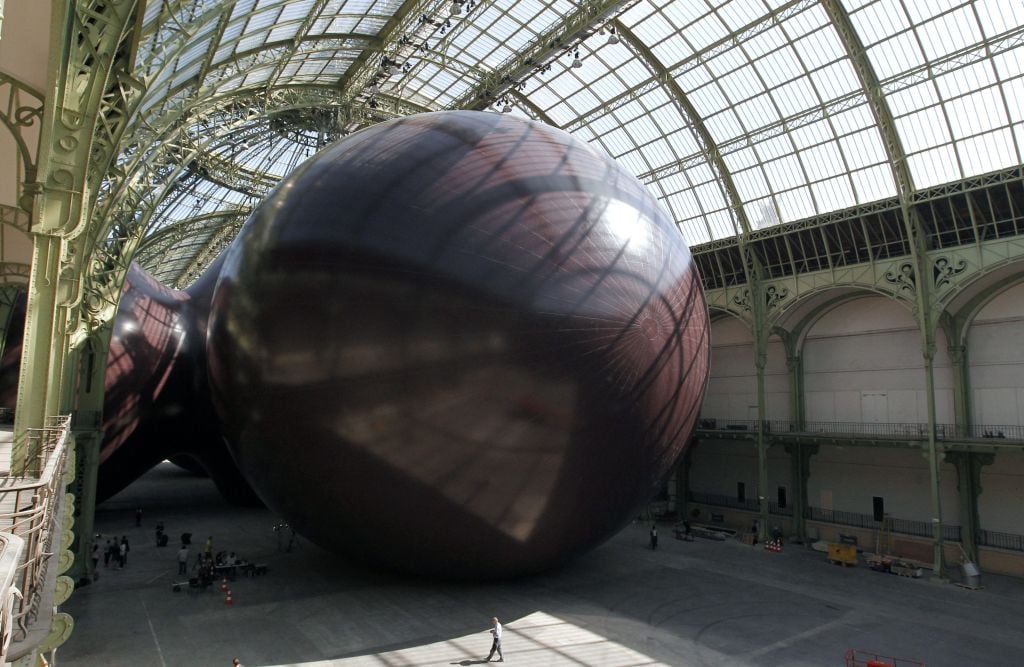
An installation from British sculptor Anish Kapoor at the Grand Palais in Paris in 2011. Photo by Patrick Kovarik/AFP via Getty Images.
Besides major exhibitions in the national galleries, Fusillier intends to produce other shows in shorter time frames. “Because the Grand Palais is so vast, we have the capacity to leave two galleries fallow, like uncultivated fields at the countryside,” he explained. “This will allow us to show something fantastic that we’ve just seen in Amsterdam, Spain, or the US and invite the artists over immediately. For example, I saw the Tim Burton exhibition in Spain at Christmas and brought it to La Villette in May.”
This reactivity has distinguished Fusillier’s trajectory and reflects a desire to respond to today’s fast-paced environment. “It’s for public establishments to be very reactive towards new trends arriving and not wait three years to show something,” he said. “However, we’re not chasing novelty at any price.”
Fusillier’s inventiveness makes him the right person for the job at the Rmn-Grand Palais, believes the gallerist Kamel Mennour. “He’s capable of inventing new ways of doing things and bringing projects to fruition that are as ambitious as they are innovative,” he said. The dealer met Fusillier in 2011 when the latter invited the artist Huang Yong Ping to participate in Lille3000. As Mennour recalled, “I was struck by his closeness to the artists and his extraordinary ability to unite people, and make art a great popular celebration.”
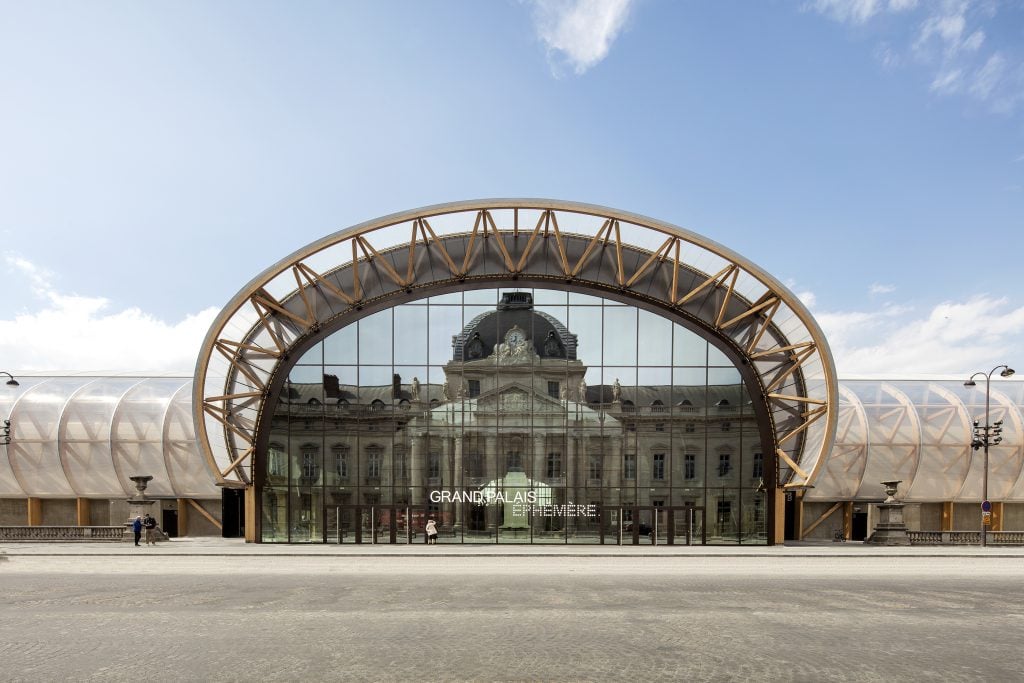
The Grand Palais Ephémère, is the temporary location of Paris+ by Art Basel, which will move to the Grand Palais next year. Photo ©Patrick Tourneboeuf.
An Institution for Everybody
“The programming needs to be like a magical lantern, something that moves, transforms, that’s never the same [because] today we’re in a world that’s very hard and tense,” he said. “I’ve always seen the world through the eyes of a child. When I was at Lille, I used to think, ‘What would a 10-year-old child think of this?’” Indeed, Fusillier also wants some areas to catch visitors off guard. “I like wastelands, forbidden places that make us feel a bit afraid, that transform and become gentrified, then we find another,” Fusillier said. “I’d like the Grand Palais to have mysterious, bizarre spaces that are slightly raw and wild, even if it’s all clean and proper, and for children to be scared of losing themselves in a fun way. I think the Grand Palais will have failed if we enter and don’t feel afraid.”.
Referring to the events that he finds inspiring, Fusillier lit up talking about the experimental, technological festival STRP in Eindhoven and the cutting-edge photography fair Unseen in Amsterdam that he attended last month. “You enter this bizarre place with installations everywhere, a bar in the center, and you keep on bumping into people as there’s a circular layout,” he enthused about Unseen.
Fusillier’s ambitions extend beyond the Grand Palais. He would like to team up with the Petit Palais, the Théâtre du Rond-Point, and the Champs-Élysées to organize parties and parades from the Place de la Concorde to Les Invalides and along Paris’s most famous avenue. “Parades are beautiful in Paris; it’s really made for parades,” Fusillier said.
Despite his extensive experience, Fusillier admits to feeling astonished that he has landed the prestigious job of the Rmn-GP’s president. “I don’t how I ended up here,” he laughed. “I’m on no social network, I’m always in underground places, and yet I’ve been entrusted with one of the biggest national institutions. I think that’s what undoubtedly pleased the President of the French Republic. When we discussed the Grand Palais, he said, ‘Are you sure you want the job? Because you know that I live opposite.’ I thought it was interesting that he considers us, the Grand Palais, as a neighbor and is concerned because it’s going to be part of his life. I’d like everybody to feel personally attached to the Grand Palais. That’s what our aim should be.”
More Trending Stories:
An Early Edition of an ‘Unhinged’ Christopher Columbus Letter Outlining What He Discovered in America Could Fetch $1.5 Million at Auction
An Elderly Couple Sold a ‘Worthless’ African Mask for $157. Now They Are Suing the Buyer Who Auctioned It for $4.4 Million
An English Woman Paid $100 for a Sculpture at a Trunk Sale That Turned Out to Be an Elisabeth Frink Work Worth $72,000
Three Artists, Immersed In Far-Flung Residencies, Offer Unique Takes on Human Truths at New York’s International Center of Photography
What I Buy and Why: British Artist Glenn Brown on His Historical Collection and the ‘Ugly Duckling’ He Bought by Accident
A Norwegian Man Stumbled Upon a Trove of Gold Dating to the Early Middle Ages, Including a Rare Pendant Depicting the Norse God Odin
A Top Antiquities Sleuth Has Called Out the Manhattan D.A. For Continually Passing His Work Off As Its Own







